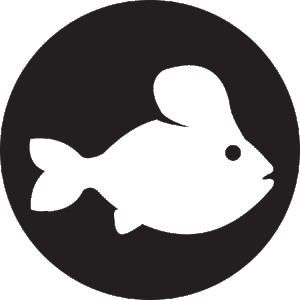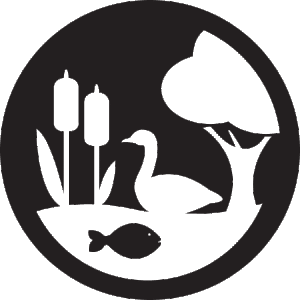World Wetlands Day, February 2, 2023
Each year, World Wetlands Day is recognized on February 2nd, which marks the anniversary of the adoption of the Convention on Wetlands of International Importance in Ramsar, Iran on February 2nd 1971. This internationally celebrated day began in 1997 with the goal to raise awareness of the importance of wetlands, the value and benefit they play in communities, and promote conservation of these areas.
Prior to first European settlers in the Detroit River watershed, the area was abundant with fish, wildlife, coastal wetlands and unspoiled drinking water. This appreciation was written in history in an account by Antoine de la Mothe Cadillac in 1901, “The banks [of the river] are so many vast meadows where the freshness of these beautiful streams keeps the grass always green. [The area is] so temperate, so fertile and so beautiful that it may justly be called the earthly paradise of North America.”
The landscape since then has significantly changed. Agriculture, intense urbanization, and industrialization led to a loss of 97% of the original wetlands and, consequently, the Detroit River suffered habitat and biodiversity loss. For this reason, among others, the river was designated as one of the original 43 Great Lakes Areas of Concern (AOC) in the Great Lakes Water Quality Agreement (GLWQA) in 1987.
Detroit River Coastal Wetlands
As part of the road to recovery, the DRCC implements the Remedial Action Plan (RAP) for the Canadian side of the Detroit River Area of Concern. Wetlands play a significant role in the Detroit River watershed by providing habitat and a place to rest, feed and breed for many of the diverse species in our area. They also help minimize erosion along the banks and shorelines of the river. Wetlands act as water filters by removing nutrients and sediments from runoff, help stabilize the water table and the local climate as well as offer recreational opportunities like hunting, fishing, bird-watching and exploring.
The importance of wetlands are recognized within the RAP Stage 2 plan and the Pathway to Delisting guidance documents. There are a variety of programs initiated by DRCC partners that aim to study and evaluate the quality of the existing wetlands, increase the amount of wetlands, and educate the public about the importance and value of wetlands in the Detroit River Area of Concern. The collaboration between many organizations help to protect existing coastal wetland habitat and restore the function in priority areas such as the marshes in Canard River, Turkey Creek, along the channel and on Fighting and Peche Islands.
What state are the Detroit River wetlands in?
Environment Canada released the Detroit River and St. Clair River Area of Concerns (AOCs): Coastal Wetland Habitat Assessment Report 2013 Update which showed wetland conditions in the Detroit River ranged from ‘very degraded’ to ‘good’ for the water quality, aquatic vegetation, sediment dwelling organisms and bird communities. Work done by the Canadian Wildlife Service has shown no net loss to date with wetland area, but the wetlands are fragmented or disconnected and patchy.
What are some species that use the Detroit River wetlands?
Some of the more common species you might come across in a Detroit River wetland include: White Water Lily, Cattail, Reed Canary Grass, Canada Waterweed, American Bittern, Mallard, Tree Swallow, Great Blue Heron, Northern Leopard Frog, American Bullfrog, Marsh Marigold, many different types dragonflies, damselflies, and butterflies, Green Frog, Muskrat and more!
What are some of the effects of wetland degradation?
- Wetlands help filter water, and when they are not able to function properly, this can lead to local water pollution from non-point sources such as agriculture in the Detroit River. This then can lead to nutrient enrichment or eutrophication (mainly phosphates and nitrates) which can cause algae blooms in Lake Erie.
- Pollution in the water and sediments affect organisms that feed off the bottom of wetlands or foraging insects known as benthic invertebrates.
- Fragmented and/or degraded wetland habitat can impact aquatic bird communities and fish species. Smaller habitat area can degrade populations of these species if sites become unsuitable or too small to breed, feed, mate and raise their young.
- Invasive species affect wetlands especially when fragmentation or area loss occurs. Invasive species can alter wetland habitat structure, reduce biodiversity and can shift the water table in the local area.
Associated Beneficial Use Impairments (BUIs)
| Degradation of Fish and Wildlife Populations | Fish Tumours or other Deformities | Bird/Animal Deformities and/or Other Reproductive Problems | Degradation of Benthos | Loss of Fish and Wildlife Habitat |
 |
 |
 |
 |
 |
Who is responsible for monitoring the Detroit River wetlands?
The collaboration between many organizations help to protect existing coastal wetland habitat and restore the function in priority areas. For example, the Great Lakes Marsh Monitoring Program has monitored wetland bird and amphibian populations binationally since 1995 with the help of Bird Studies Canada, Essex Region Conservation Authority, the United States Environmental Protection Agency and dedicated volunteers. In addition, through the Canadian Wildlife Services branch of Environment and Climate Change Canada, the Great Lakes Coastal Wetland Monitoring program is administered to monitor wetland wildlife communities (marsh birds, aquatic macroinvertebrates and submerged aquatic vegetation), habitat and water quality.
What is taking place to protect, restore and enhance the amount of wetlands in the Detroit River?
The RAP Stage 2 and Pathway to Delisting guiding documents recognize the importance of wetlands. There are varieties of programs initiated by the DRCC that aim to understand, increase the amount of wetlands and educate the public about the importance of wetlands in the Detroit River Area of Concern. The collaboration between many organizations help to protect existing coastal wetland habitat and restore the function in priority areas.
- Great Lakes Marsh Monitoring Program the Great Lakes Coastal Wetland Monitoring program monitors wetland wildlife communities (marsh birds, aquatic macroinvertebrates and submerged aquatic vegetation), habitat and water quality.
- Wetland creation opportunities are hosted by the Essex Region Conservation Authority and the Essex County Stewardship Network to support Detroit River watershed landowners
- The Habitat Work Group of the Detroit River Canadian Cleanup is creating a decision matrix for prioritizing potential sites for restoration within the river system. This program will help evaluate and rank the potential actions that could take place to help guide restoration. This decision matrix will be useful in future to identify new sites, actions and best practices as the RAP moves forward with delisting impaired fish habitat that benefits both fisheries and aquatic diversity.
- Community organizations such as the Detroit River Canadian Cleanup, Essex Region Conservation Authority, the Essex County Field Naturalists Club, Little River Enhancement Group, Friends of Canard River, Friends of Turkey Creek Watershed have hosted cleanups and plantings in the Detroit River and three sub-watersheds to improve habitat quantity and quality.
What can individuals do to help protect the Detroit River wetlands?
- Always dispose solid and liquid hazardous and non-hazardous waste properly. It is important to be environmentally responsible and take care of the Detroit River system! Visit Windsor Essex Solid Waste Authority’s website http://www.ewswa.org/ for information regarding waste disposal in Essex region.
- This includes not pouring anything down the storm drain.
- If you see illegal dumping or a spill in and along the water channel, report it using any of the following ways:
- 1-800-265-7672 (area code 519 only)
- Public Information Centre: 1-800-565-4923
- Spills Action Centre: 1-800-268-6060
- Pollution Hotline: 1-866-663-8477
- Watch the DRCC videos Wastewater: Where does it go? and 1, 2, and TP, that’s it! Visit our site: detroitriver.ca/media.
- Avoid water activities such as washing your vehicle in areas where the wastewater will flow into the storm sewer. Washing on a lawn or gravel surface allows wastewater to be absorbed by soil below
- Keep the storm sewers clean and void of litter and debris during heavy rain events. Rainwater is the only liquid that should go down the storm sewers!
- Disconnecting downspouts frees up capacity in the sewers during a storm event as they allow water to flow across the lawn. Also installing a rain barrel will collect this water during a storm and can be used in your garden on dry days. Both these actions help reduce the volume of sewage and or runoff that can end up in the Detroit River untreated.
